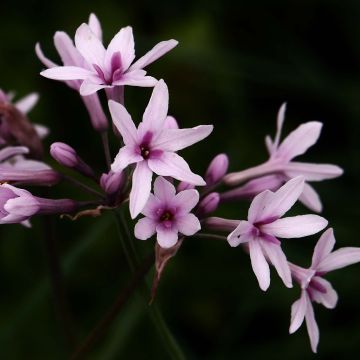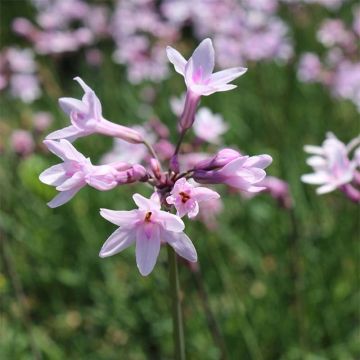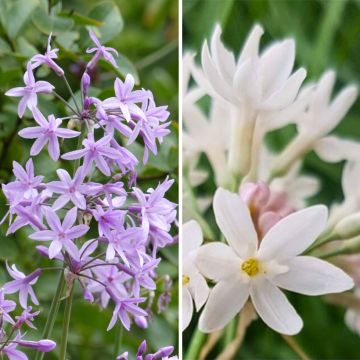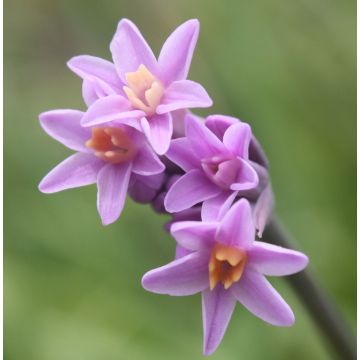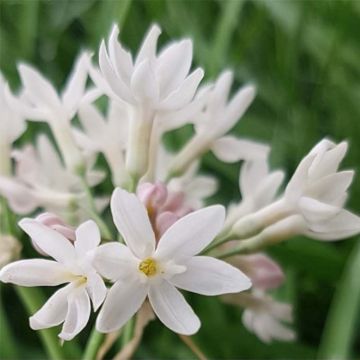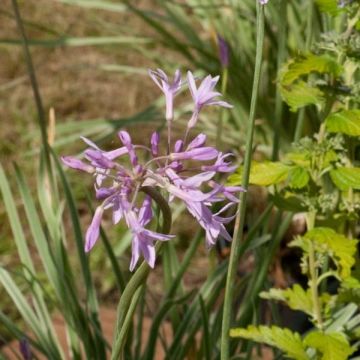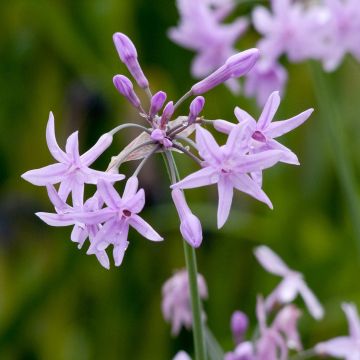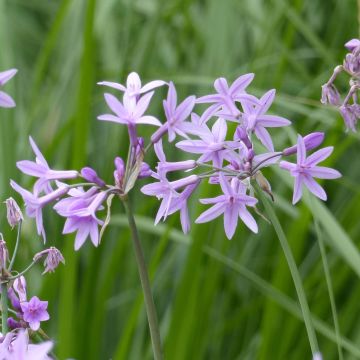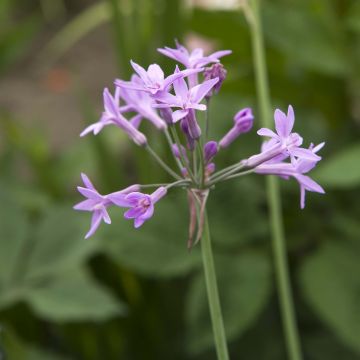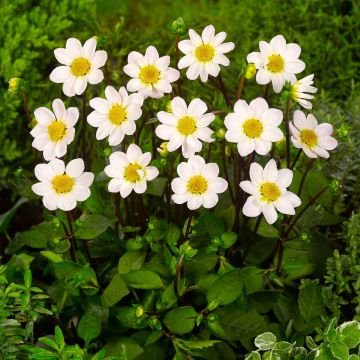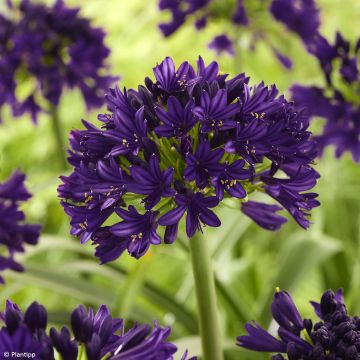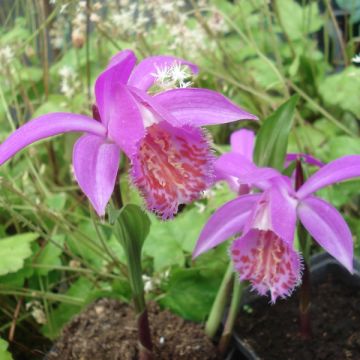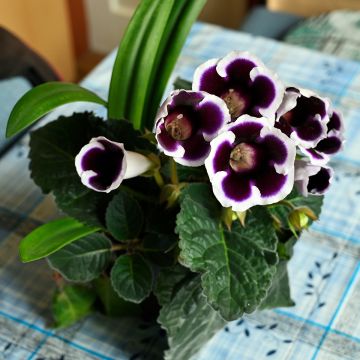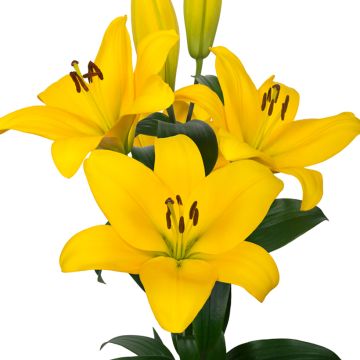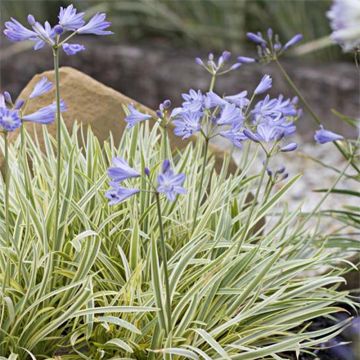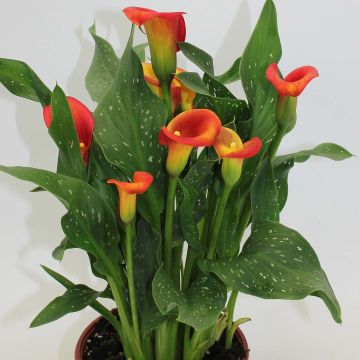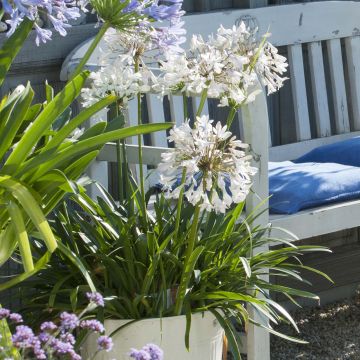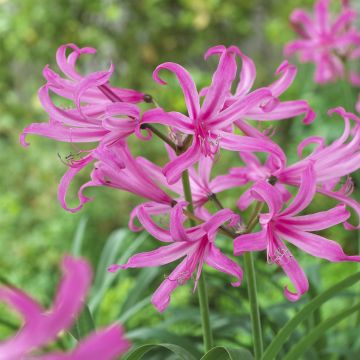Shipping country and language
Your country of residence may be:
Your country of residence is:
For a better user experience on our website, you can select:
Your shipping country:
-
Andorra
-
Austria
-
Belgium
-
Bulgaria
-
Canada
-
Chile
-
Croatia
-
Cyprus
-
Czechia
-
Denmark
-
Estonia
-
Finland
-
France
-
Germany
-
Greece
-
Hungary
-
Iceland
-
Ireland
-
Italy
-
Latvia
-
Lithuania
-
Luxembourg
-
Malta
-
Monaco
-
Netherlands
-
Poland
-
Portugal
-
Romania
-
Slovakia
-
Slovenia
-
Spain
-
Sweden
-
Switzerland
-
United Kingdom
We only deliver seed and bulb products to your country. If you add other products to your basket, they cannot be shipped.
Language:
-
French
-
German
-
Spanish
-
English
-
Italian
My Account
Hello
My wish lists
Log in / Register
Existing customer?
New customer?
Create an account to track your orders, access our customer service and, if you wish, make the most of our upcoming offers.
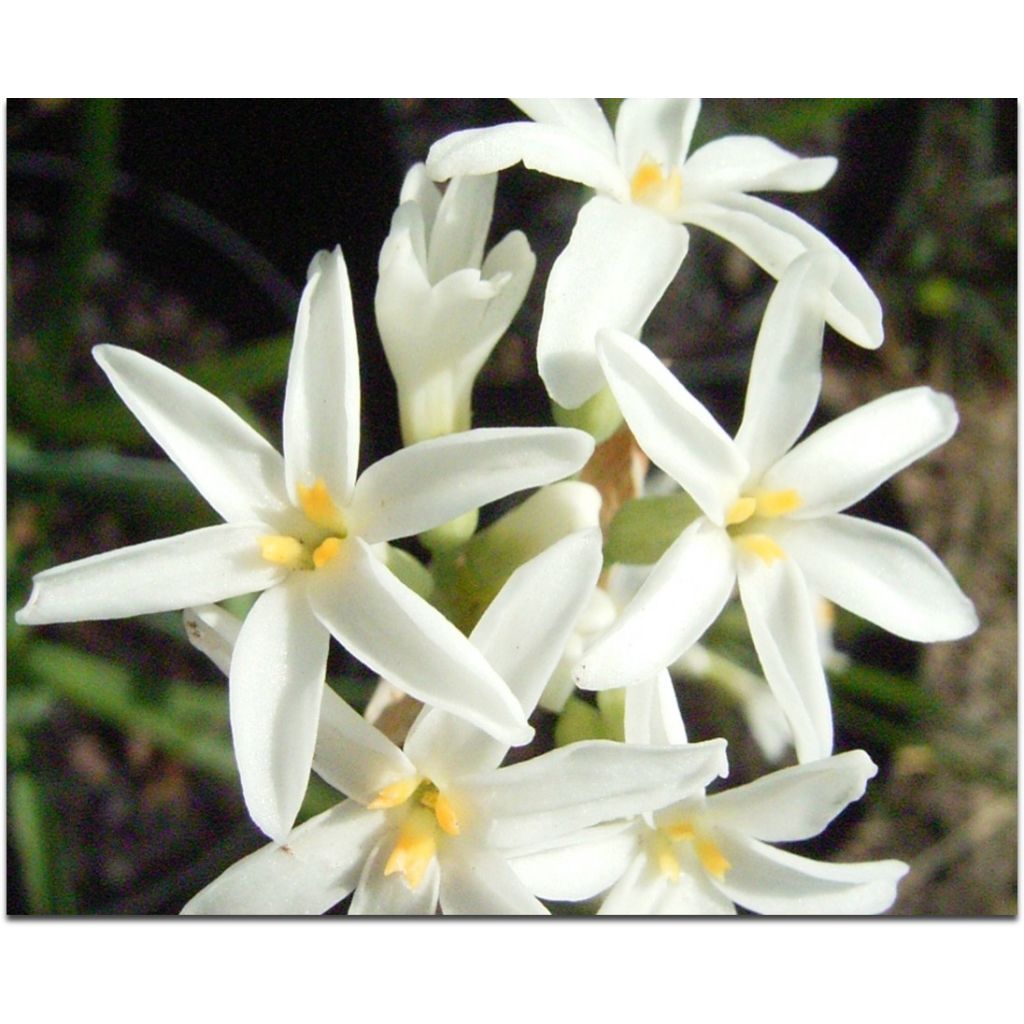

Tulbaghia violacea Savannah Lightning
Tulbaghia violacea Savannah Lightning
Tulbaghia violacea var. maritima Savannah Lightning
Society Garlic, Pink Agapanthus
Order in the next for dispatch today!
Dispatch by letter from €3.90.
Delivery charge from €5.90 Oversize package delivery charge from €6.90.
More information
This item is not available in your country.
Schedule delivery date,
and select date in basket
This plant carries a 6 months recovery warranty
More information
We guarantee the quality of our plants for a full growing cycle, and will replace at our expense any plant that fails to recover under normal climatic and planting conditions.
From €5.90 for pickup delivery and €6.90 for home delivery
Express home delivery from €8.90.
From €5.90 for pickup delivery and €6.90 for home delivery
Express home delivery from €8.90.
Does this plant fit my garden?
Set up your Plantfit profile →
Description
The Tulbaghia violacea 'Savannah Lightning' is an exceptionally bright selection of the violet tulbaghia, which charms with its pure white flowers. Over time, it forms a beautiful tuft of leaves from which numerous small umbels of star-shaped flowers emerge for long weeks. This aromatic bulbous plant is also used to enhance salads, like chives or garlic. Its foliage will persist in case of a not-too-cold winter, and it will flower almost all year round in mild climates. With its small agapanthus-like appearance, the Tulbaghia is ideal in flower beds and borders, allowing for very pretty flowering pots for the terrace or balcony.
The Tulbaghia violacea 'Savannah Lightning' belongs to the Alliaceae family, like leeks, garlic and onions. The wild form originates from South Africa, more precisely from the prairies of Lesotho and Swaziland, which benefit from relatively dry winters and rainy summers. It is a herbaceous perennial plant with a fleshy tuberous root forming a tuft of thin, ribbon-like leaves, more or less evergreen, depending on the winter temperature and offering a long summer flowering.
The cultivar ''Savannah Lightning' is a natural mutation of Tulbaghia var. maritima with white flowers, introduced in South Africa by Fisk Horticulture in 2016. This plant develops into a spreading tuft that widens through its rhizomes. When in bloom, it measures about 40-45 cm (16-18in) in height and 40 cm (16in) in width. Its flowering, which extends over a long period, starts, depending on the climate, in May (early June in average climates) and only ends with cold weather around October. In milder regions, it is capable of flowering almost all year round. Tufts of leaves emerge from the floral stems bearing false umbels of tubular flowers that open into 6-petaled stars around a centre with yellow stamens. The flowers exude a sweet honey scent, but it is overwhelmed by the garlic smell that emanates from the entire plant. They are followed by the formation of seeds that can self-sow but may not necessarily produce flowers identical to those of the mother plant. The foliage is delicate, narrow and erect, linear, grey-green in colour, yet flexible enough to arch slightly. It is highly aromatic and gives off a powerful garlic odour perceptible at a few metres in hot weather.
The Tulbaghia is a very pretty plant appreciated for its prolonged flowering until autumn. It allows adding colour to the garden or terrace during this period of the year that offers few blooms. Along a flower bed or pathway, or in a rock garden, it can replace agapanthus or be combined by choosing from the more compact varieties (Agapanthus Silver Moon, Golden Drop, Pitchoune...). If, however, its fragrance doesn't bother you. Otherwise, plant it a bit further back. This powerful garlic-like fragrance repels pests like aphids and also has fungicidal properties. The violet tulbaghia will, therefore, be useful in the vegetable garden and orchard to protect carrots, lettuce, beetroot, and peaches in ornamental gardens. As it is quite sensitive to cold, especially in moist soil during winter, growing it in a pot is often preferable, except in very mild climates. This plant thrives outdoors in summer, exposed to light but without direct sunlight. You can use finely chopped leaves in your salads or even some flowers. It is an excellent coastal plant; it accepts sandy soils and sea spray. The most favourable climate for it would be a mild oceanic type. In Mediterranean regions, it will require regular summer watering or may disappear in the medium term.
Report an error about the product description
Plant habit
Flowering
Foliage
Botanical data
Tulbaghia
violacea var. maritima
Savannah Lightning
Alliaceae
Society Garlic, Pink Agapanthus
Cultivar or hybrid
Other Tulbaghia
Planting and care
Tulbaghia appreciates well-drained soils, whether slightly acidic, neutral or slightly alkaline. It prefers light and sandy soils. Its hardiness (-10 °C) will be reduced in wet and poorly drained soils in winter. A mix of leaf compost and sand makes a suitable substrate for its cultivation. Choose a sunny or, at most, partially shaded exposure in hot and sunny regions. It appreciates moist soils during its flowering period (spring-summer) but drier in autumn and winter. It tolerates sea sprays perfectly.
Transplant your young plants into a pot measuring about twenty centimetres, containing 1/3 soil, 1/3 compost, and 1/3 sand. Leave them in a warm and well-lit place (but without direct sunlight) until the last frosts. You can then take your pot outside. Bring them indoors at the beginning of autumn when the temperatures drop. In the ground, space the plants 20 cm (8in) apart. In autumn, cut back the clumps to 3 or 4 cm (1 or 2in) above the ground and mulch heavily to protect from the cold: tulbaghia is hardy down to -5 °C to -10 °C depending on the soil drainage. In pots: during the growth period, water two to three times a week and provide liquid fertiliser at least every 15 days to achieve good flowering. In winter, reduce watering. Repot every three years.
Planting period
Intended location
Care
This item has not been reviewed yet - be the first to leave a review about it.
Bulbs to grow in pots
Haven't found what you were looking for?
Hardiness is the lowest winter temperature a plant can endure without suffering serious damage or even dying. However, hardiness is affected by location (a sheltered area, such as a patio), protection (winter cover) and soil type (hardiness is improved by well-drained soil).

Photo Sharing Terms & Conditions
In order to encourage gardeners to interact and share their experiences, Promesse de fleurs offers various media enabling content to be uploaded onto its Site - in particular via the ‘Photo sharing’ module.
The User agrees to refrain from:
- Posting any content that is illegal, prejudicial, insulting, racist, inciteful to hatred, revisionist, contrary to public decency, that infringes on privacy or on the privacy rights of third parties, in particular the publicity rights of persons and goods, intellectual property rights, or the right to privacy.
- Submitting content on behalf of a third party;
- Impersonate the identity of a third party and/or publish any personal information about a third party;
In general, the User undertakes to refrain from any unethical behaviour.
All Content (in particular text, comments, files, images, photos, videos, creative works, etc.), which may be subject to property or intellectual property rights, image or other private rights, shall remain the property of the User, subject to the limited rights granted by the terms of the licence granted by Promesse de fleurs as stated below. Users are at liberty to publish or not to publish such Content on the Site, notably via the ‘Photo Sharing’ facility, and accept that this Content shall be made public and freely accessible, notably on the Internet.
Users further acknowledge, undertake to have ,and guarantee that they hold all necessary rights and permissions to publish such material on the Site, in particular with regard to the legislation in force pertaining to any privacy, property, intellectual property, image, or contractual rights, or rights of any other nature. By publishing such Content on the Site, Users acknowledge accepting full liability as publishers of the Content within the meaning of the law, and grant Promesse de fleurs, free of charge, an inclusive, worldwide licence for the said Content for the entire duration of its publication, including all reproduction, representation, up/downloading, displaying, performing, transmission, and storage rights.
Users also grant permission for their name to be linked to the Content and accept that this link may not always be made available.
By engaging in posting material, Users consent to their Content becoming automatically accessible on the Internet, in particular on other sites and/or blogs and/or web pages of the Promesse de fleurs site, including in particular social pages and the Promesse de fleurs catalogue.
Users may secure the removal of entrusted content free of charge by issuing a simple request via our contact form.
The flowering period indicated on our website applies to countries and regions located in USDA zone 8 (France, the United Kingdom, Ireland, the Netherlands, etc.)
It will vary according to where you live:
- In zones 9 to 10 (Italy, Spain, Greece, etc.), flowering will occur about 2 to 4 weeks earlier.
- In zones 6 to 7 (Germany, Poland, Slovenia, and lower mountainous regions), flowering will be delayed by 2 to 3 weeks.
- In zone 5 (Central Europe, Scandinavia), blooming will be delayed by 3 to 5 weeks.
In temperate climates, pruning of spring-flowering shrubs (forsythia, spireas, etc.) should be done just after flowering.
Pruning of summer-flowering shrubs (Indian Lilac, Perovskia, etc.) can be done in winter or spring.
In cold regions as well as with frost-sensitive plants, avoid pruning too early when severe frosts may still occur.
The planting period indicated on our website applies to countries and regions located in USDA zone 8 (France, United Kingdom, Ireland, Netherlands).
It will vary according to where you live:
- In Mediterranean zones (Marseille, Madrid, Milan, etc.), autumn and winter are the best planting periods.
- In continental zones (Strasbourg, Munich, Vienna, etc.), delay planting by 2 to 3 weeks in spring and bring it forward by 2 to 4 weeks in autumn.
- In mountainous regions (the Alps, Pyrenees, Carpathians, etc.), it is best to plant in late spring (May-June) or late summer (August-September).
The harvesting period indicated on our website applies to countries and regions in USDA zone 8 (France, England, Ireland, the Netherlands).
In colder areas (Scandinavia, Poland, Austria...) fruit and vegetable harvests are likely to be delayed by 3-4 weeks.
In warmer areas (Italy, Spain, Greece, etc.), harvesting will probably take place earlier, depending on weather conditions.
The sowing periods indicated on our website apply to countries and regions within USDA Zone 8 (France, UK, Ireland, Netherlands).
In colder areas (Scandinavia, Poland, Austria...), delay any outdoor sowing by 3-4 weeks, or sow under glass.
In warmer climes (Italy, Spain, Greece, etc.), bring outdoor sowing forward by a few weeks.
